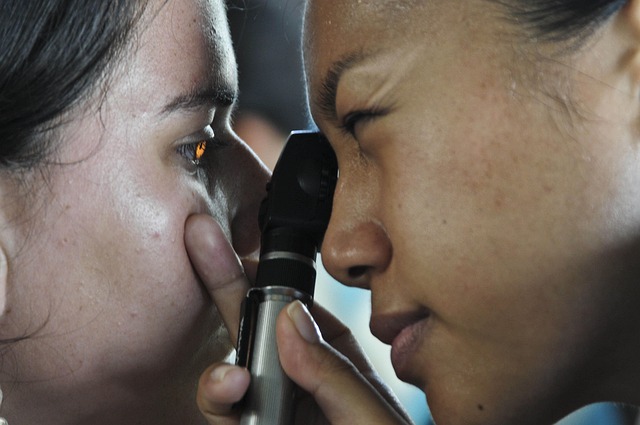How many days of rest are needed after cataract surgery?
Cataract surgery is a common, effective treatment for cataracts to restore vision. Post-op rest and resuming daily activities directly impact results and eye health. Many patients wonder: How many rest days do I need? When can I safely get back to daily tasks? There’s no universal answer—it depends on surgery type, personal health, and recovery progress. This article shares evidence-based rest tips and a phased plan for smooth recovery.

Cataract surgery is one of the most commonly performed procedures worldwide, with millions of patients experiencing restored vision each year. The recovery process, while generally straightforward, requires careful attention to rest periods and activity restrictions to ensure optimal healing outcomes.
Key Points for Cataract Postoperative Recovery
The immediate postoperative period following cataract surgery is critical for proper healing. Most patients experience minimal discomfort and can return home the same day as their procedure. During the first 24 hours, complete rest is recommended, with patients advised to avoid bending, lifting, or straining. The eye may feel scratchy or irritated, and vision might appear blurry or hazy as the eye adjusts to the new intraocular lens.
Protective eyewear, typically in the form of a shield, must be worn during sleep for the first week to prevent accidental rubbing or pressure on the operated eye. Eye drops prescribed by the surgeon play a crucial role in preventing infection and reducing inflammation during this initial recovery phase.
Recommendations for Basic Postoperative Rest Duration
The standard recommendation for basic rest following cataract surgery ranges from 24 to 48 hours for most patients. During this period, individuals should avoid strenuous activities, heavy lifting (anything over 10 pounds), and bending at the waist. Light activities such as reading, watching television, and gentle walking are generally permitted after the first day.
Most patients can return to desk work or light duties within 2-3 days, provided their occupation doesn’t involve heavy physical labor or exposure to dust and debris. However, the timeline may extend for individuals with physically demanding jobs or those experiencing complications during the healing process.
Phased Plan for Resuming Daily Activities
A structured approach to resuming normal activities helps ensure proper healing while maintaining quality of life. During the first week, patients should focus on light activities and avoid swimming, hot tubs, or any activity that might introduce bacteria to the eye area. Driving is typically permitted once vision meets legal requirements, usually within a few days to a week.
Week two through four involves gradually increasing activity levels. Light exercise such as walking or stationary cycling may be resumed, but contact sports and activities with risk of eye injury should be avoided for at least a month. Household chores can be gradually reintroduced, with continued caution around dust, chemicals, and heavy lifting.
By the fourth week, most patients can return to their normal activity levels, including more vigorous exercise and recreational activities. However, protective eyewear should be considered for sports or activities with potential eye injury risk.
List of Postoperative Restricted Activities
Specific activities must be avoided during the initial recovery period to prevent complications. Swimming and water activities pose infection risks and should be avoided for at least two weeks. Heavy lifting, defined as anything over 10-15 pounds, can increase intraocular pressure and should be restricted for the first week.
Rubbing or touching the eye area is strictly prohibited, as this can introduce bacteria or disrupt the healing incision. Makeup application around the eye should be avoided for at least one week, and when resumed, all eye cosmetics should be replaced to prevent bacterial contamination.
Driving restrictions apply until vision meets legal standards and the patient feels comfortable operating a vehicle safely. Some patients may experience temporary visual disturbances such as glare or halos around lights, which typically resolve as healing progresses.
Key Factors Affecting Recovery Progress
Several factors influence individual recovery timelines and rest requirements. Age plays a significant role, with older patients sometimes requiring longer recovery periods due to slower healing processes. Pre-existing eye conditions such as glaucoma or diabetic retinopathy may extend recovery time and require modified activity restrictions.
Compliance with prescribed eye drop regimens directly impacts healing speed and complication prevention. Patients who diligently follow medication schedules typically experience smoother recoveries with fewer complications. Environmental factors such as exposure to dust, wind, or bright sunlight can affect comfort levels and may require additional precautions.
Overall health status, including conditions like diabetes or autoimmune disorders, can influence healing rates. Patients with compromised immune systems may require extended rest periods and closer monitoring during recovery.
The surgical technique used and any complications during the procedure can also affect recovery requirements. Modern phacoemulsification techniques typically result in faster healing compared to older surgical methods, but individual responses vary.
Most patients achieve significant visual improvement within a few days to weeks following cataract surgery. While the initial rest period is relatively brief, complete healing and visual stabilization may take several weeks to months. Following surgeon recommendations for activity restrictions and rest periods significantly improves outcomes and reduces the risk of complications. Regular follow-up appointments ensure proper healing progression and allow for timely intervention if issues arise.
This article is for informational purposes only and should not be considered medical advice. Please consult a qualified healthcare professional for personalized guidance and treatment.




